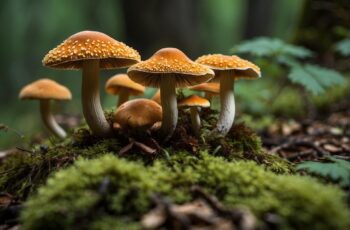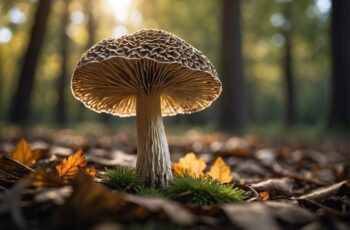As you explore the rolling hills and lush forests of West Virginia, you’ll find the state’s natural areas to be a forager’s paradise, particularly when it comes to hunting for morels. These elusive fungi are a prized find for enthusiasts, offering both a delightful culinary experience and the joy of the hunt. West Virginia, with its diverse ecosystems, provides a variety of habitats where morels flourish, from the hardwood forests in the lowlands to the mixed woodlands of the Appalachian range.
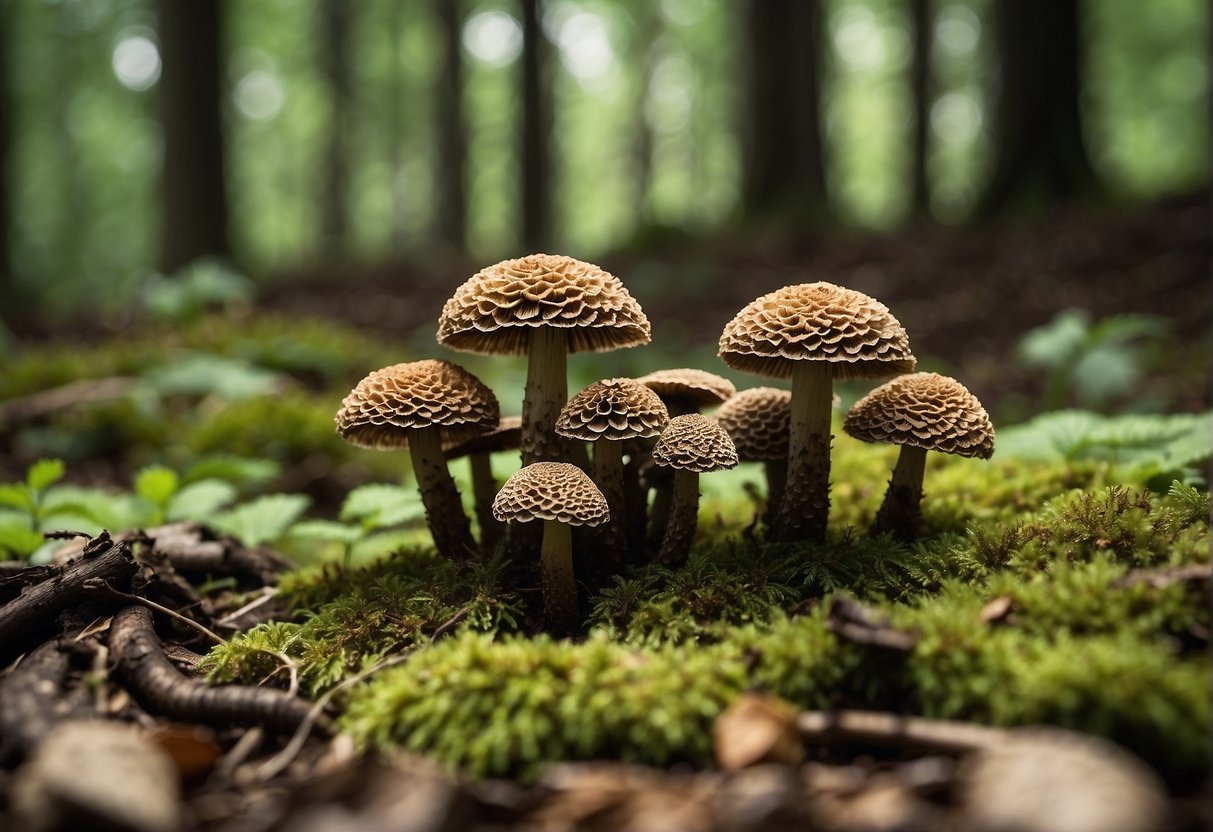
Your foraging guide for West Virginia morels begins each spring when the soil warms and the woods come to life with the sounds and colors of the new season. Morels have a distinctive appearance, with their honeycomb-like structure and varying colors from yellow to dark brown, and they require specific conditions to thrive. Embrace the challenge of scouring the forest floor for these camouflaged treasures, knowing that the best times to find them are when the air and soil temperatures are just right, following a period of rain.
Arming yourself with knowledge about the typical morel habitats will make your search more fruitful. Look for morels in areas with neutral to alkaline soils, searching near trees like elms, ashes, and poplars, as morels often associate with these species. The environment of West Virginia demands a sharp eye and a bit of local knowledge to successfully find morels, but the reward, whether it be a basketful of these savory mushrooms or the pleasure of immersion in the great outdoors, is undeniably worth the effort.
Understanding Morels in West Virginia
West Virginia offers a diverse ecosystem where morels, a sought-after edible mushroom, thrive under the right conditions. Knowing the specifics of species identification and habitat requirements is essential for successful foraging.
Species and Identification
Morels in West Virginia primarily consist of two types: black morels (Morchella elata) and yellow morels (Morchella esculenta). Your identification skills must be sharp as you’re in a region home to over 1,700 species of mushrooms, some of which can be poisonous. The black morel has a darker, honeycomb-like appearance, while the yellow morel is lighter with a similarly pitted surface. Ensure to avoid the toxic conifer false morel (Gyromitra esculenta), which can be mistaken for true morels but is distinguished by its brain-like, wrinkled cap.
-
True Morels:
- Black morels: Dark brown to black cap, highly ridged and pitted.
- Yellow morels: Tan to yellow cap, smaller pits and ridges.
-
False Morels:
- Conifer false morel: Wavy, lobed cap, resembles a brain rather than a honeycomb.
When foraging for morels, always carry a field guide or app for accurate identification to avoid toxic species like the destroying angel (Amanita virosa), a deadly mushroom found in these woods.
Habitat and Growth Conditions
Morels favor certain environments to flourish. They are often found in wooded areas, particularly among ash, elm, and poplar trees. Searching after a spring rain can increase your odds of finding them, as moisture prompts morels to emerge.
For optimal foraging, focus on these conditions:
- Soil: Morels prefer neutral to alkaline soil, although West Virginia’s soil tends to be more acidic.
- Temperature: Growth starts when the soil warms to around 53 degrees Fahrenheit.
- Terrain: Gradual slopes with ample sunlight are prime spots.
Remember, patience and persistence are key in your foraging endeavors. With careful observation of the right conditions and habitats, you’ll increase your chances of a bountiful harvest of these culinary delights. Happy hunting!
Best Practices for Morel Foraging
When foraging for morel mushrooms in the wild, your safety and the health of the ecosystem are paramount. Remember, proper identification and understanding of local foraging rules are key to a safe and ethical mushroom hunt.
Foraging Ethics
- Respect the land: Always seek permission if you’re foraging on private property and follow the “leave no trace” principles during your outing.
- Sustainable harvesting: Be mindful to not over-harvest; pick only what you need. It’s recommended to cut the morel mushroom at the base, leaving the roots intact, which helps in the regeneration for the next season.
Safety and Poisonous Look-Alikes
-
Accurate identification: Familiarize yourself with morel mushrooms, and be 100% sure of your identification. Morels have a distinctive honeycomb cap with pits and ridges, while poisonous look-alikes like the Amanita virosa lack the honeycomb pattern and can be deadly if consumed.
-
Essentials for a safe hunt:
- Bring a field guide or use a mobile app specifically for mushroom identification.
- Wear appropriate clothing, including long pants, sturdy boots, and gloves.
- Carry a compass or a GPS device, and let someone know where you’re heading.
By adopting these practices, your hunting for morel mushrooms can be both rewarding and safe, benefiting you and the wilderness you enjoy.
When and Where to Find Morel Mushrooms
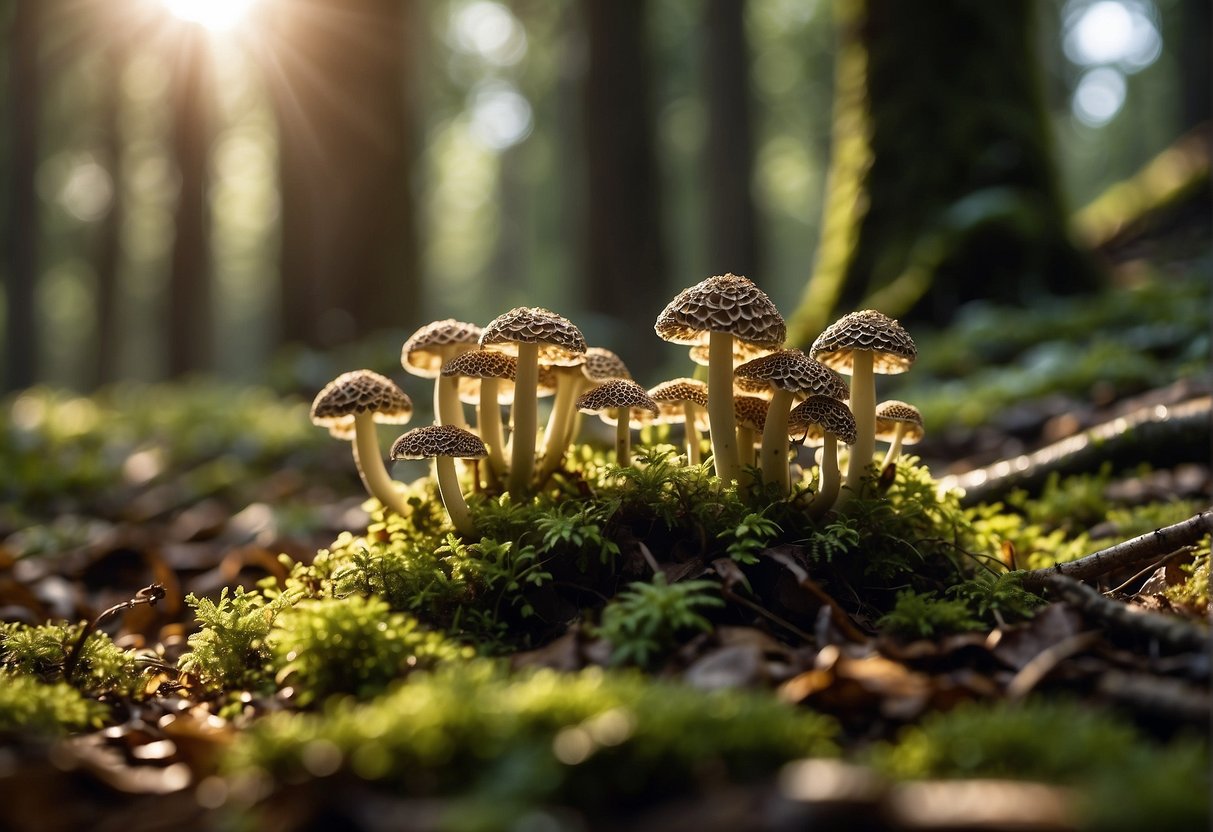
Embarking on the hunt for morel mushrooms in West Virginia offers both a challenge and a reward. To ensure success in your quest, understanding the seasonality and prime locations for these elusive fungi is key.
Seasonal Timing
Spring marks the start of the morel mushroom season, typically spanning from March to May. The emergence of morels is closely tied to the weather—specifically soil temperature and rainfall. You should begin your search when the air temperature consistently stays above 60 degrees Fahrenheit, and the ground temperature rises to about 53 degrees. Frequent rain events, especially warm spring showers, create the moist conditions morels favor.
Prime Locations for Morel Hunting
Morels thrive in wet areas near bodies of water. Search for them in deciduous forests, where they often hide under a canopy of hardwood trees such as ash, elm, poplar, and spruce. These mushrooms are partial to forested areas with dead or dying trees, utilizing the rich organic matter to grow. Apple orchards are another excellent place for morel hunting, particularly those that are well-aged. Keep your eyes peeled for the distinctive honeycomb caps of morels at the base of these trees. Remember, while morels can be widespread, they are masters of camouflage, so inspect the forest floor closely.
Culinary Uses and Benefits of Morels
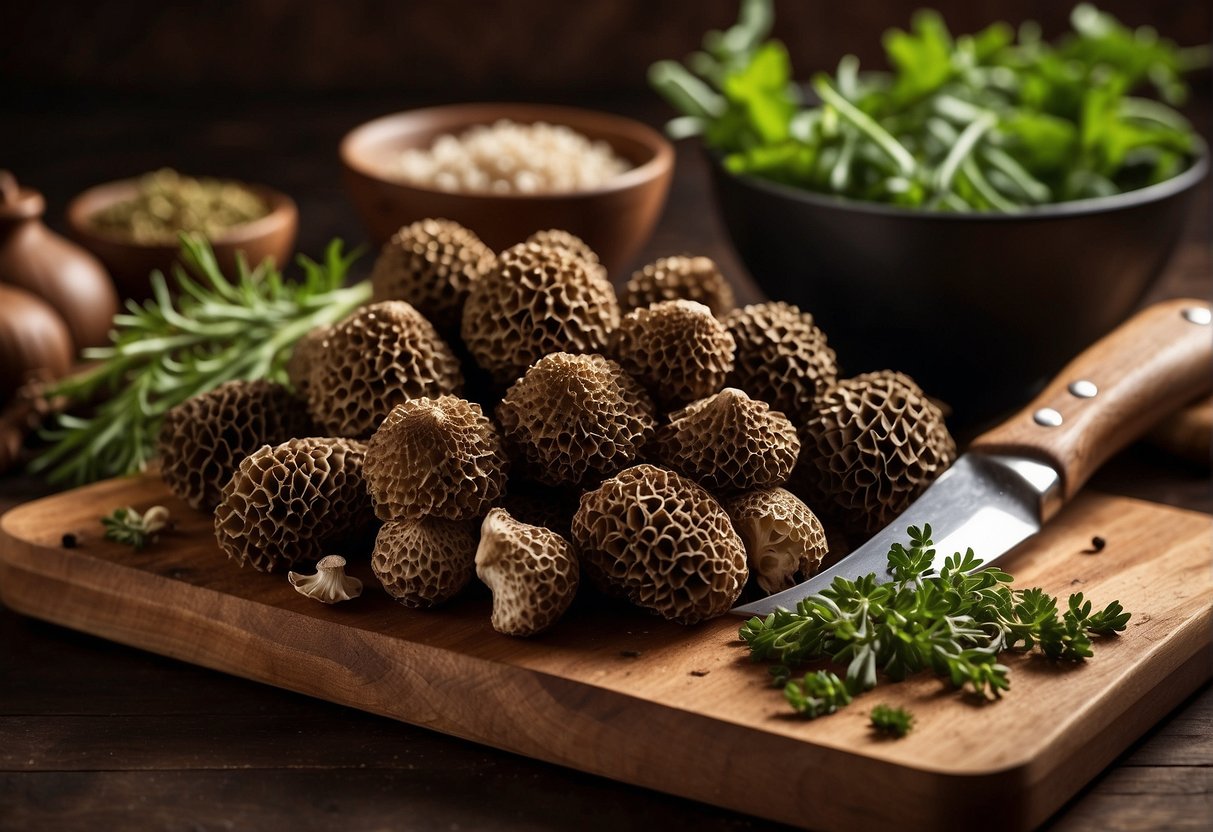
Morel mushrooms are a forager’s delight and a chef’s treasure, known for their earthy flavor and impressive versatility in dishes. When you find or purchase these gems, you’re not only getting a delicious ingredient but also adding nutritional value to your meals.
Preparing Morel Mushrooms
To savor the true flavor of morel mushrooms, proper preparation is key. Before cooking, ensure they are cleaned thoroughly to remove any debris. You can slice the morels in half and soak them in salt water to purge any insects. The most popular way to cook morels is to fry them. Toss your cleaned morels in flour seasoned with salt and pepper, and then pan-fry them in butter until they’re golden brown. The result is a crispy exterior with a tender, meaty interior—a perfect addition to any meal.
Another sublime pairing is morels and dandelions, the bitter green complementing the umami-rich taste of the mushrooms. Incorporate them into pasta, or simply enjoy them sautéed with garlic as a side dish. When you’re dealing with morels, simplicity in cooking highlights their distinctive taste.
Health Benefits and Nutritional Value
Morel mushrooms are not only prized for their taste but also for their health benefits:
- Low in Calories: A good fit for those watching their weight
- Rich in Nutrients: They provide iron, phosphorus, vitamin D, and B vitamins
Eating morels contributes to your overall food experience while also delivering a boost in essential nutrients. Whether you add them to a sauce or enjoy them on their own, these mushrooms can elevate your home cooking to new heights. Remember, the next time you’re in the woods or perusing the farmers’ market, keep an eye out for these culinary treasures.

